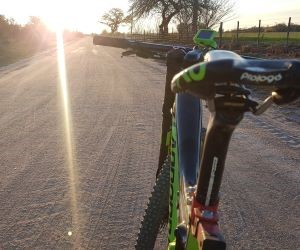Learn how to choose between clipless and flat pedals by comparing efficiency, control, comfort, and riding style to find the right setup for your needs.
WHAT ARE THE BEST STRATEGIES FOR STAGE RACE RECOVERY?
Stage races challenge cyclists with consecutive days of intense effort, making recovery critical for performance. Effective recovery strategies combine nutrition, rest, active recovery, and mental conditioning to sustain energy, reduce fatigue, and prevent injury. This article provides evidence-based approaches and practical tips to optimize recovery between stages, ensuring cyclists perform at their best throughout multi-day competitions.

Understanding stage race recovery
Stage races place repeated physical stress on the body. Recovery is essential to restore energy stores, repair muscles, and maintain mental focus. Inadequate recovery can lead to cumulative fatigue, reduced performance, and increased injury risk.
Key recovery principles
Energy restoration: Replenish glycogen stores depleted during racing.
Muscle repair: Support tissue recovery and adaptation through nutrition and rest.
Hydration and electrolyte balance: Replace fluids lost through sweat to prevent fatigue.
Neuromuscular recovery: Reduce muscle soreness and restore power output for subsequent stages.
Mental recovery: Maintain focus, motivation, and tactical awareness for the next stage.
Understanding these principles allows cyclists and support teams to develop effective, stage-specific recovery strategies that optimize performance across consecutive race days.
Nutrition strategies
Proper nutrition is the foundation of stage race recovery. Timing, composition, and calorie intake all influence how quickly and effectively the body recovers.
Post-stage nutrition
Carbohydrate replenishment: Consume 1–1.2 g/kg body weight within 30–60 minutes post-stage to restore glycogen.
Protein intake: Include 20–30 g of high-quality protein to support muscle repair.
Hydration: Replace fluids with water and electrolyte solutions to restore balance and prevent cramping.
Antioxidants and micronutrients: Fruits and vegetables help reduce oxidative stress and inflammation.
Frequent small meals: Promote steady energy restoration without gastrointestinal discomfort.
Strategically timed nutrition accelerates recovery, allowing riders to maintain high performance throughout multi-day events.
Active recovery techniques
Active recovery involves low-intensity activities that promote circulation, reduce stiffness, and facilitate metabolic waste removal, supporting faster recovery than complete rest alone.
Effective methods
Easy spins: Short, low-intensity cycling to enhance blood flow to fatigued muscles.
Walking or light jogging: Helps circulation and prevents stiffness without adding strain.
Stretching and mobility exercises: Focus on hamstrings, quadriceps, hips, and back to maintain flexibility.
Foam rolling and myofascial release: Reduce muscle tightness and improve tissue recovery.
Integrating active recovery strategies between stages accelerates repair, reduces soreness, and maintains functional mobility for optimal performance.
YOU MAY ALSO BE INTERESTED






